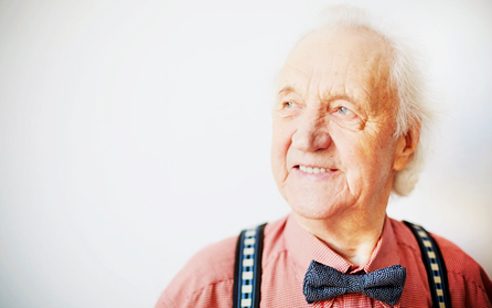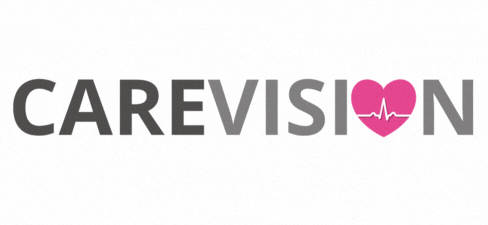Retirement Living Technology from CareVision

In Australia, there is an increased need to draw up and provide 5,000 new retirement living and aged care facilities to meet the needs of the growing older population entering the retirement phase or aged care. Aside from the retirement living technology that benefits the entire aged care system, the demands for architectural and design services for retirement living and aged care facilities are also on the rise.
If you are an architect or designer for residential homes or care facilities, staying abreast of the latest design considerations and technology-based solutions that tackle the needs of retirement living and aged care is essential.
CareVision is an eHealth company that provides cutting-edge solutions for the Aged Care and Retirement Living market. The depth of our insight and knowledge comes from years of researching, prototyping and developing technology solutions which gave light to issues related to built space.
Here we outline the top four design considerations for the built space and challenge you to weave them into the fabric of your designs:

- Reducing Social Isolation
Social isolation appears at any age, but it is most prevalent in old age. Several factors including health problems like hearing loss and disability, the death of partner or spouse, children living away from home and maladaptive traits to technology play a significant role in developing social isolation.
Social isolation increases the chances of developing health complications like cardiovascular disease, depression and Dementia, which can lead to 45% increased risk of premature death.
Designing common room spaces that promote interaction between people goes beyond adding a community hall. Architects and designers must consider adding in some splash of lively colours, aged care friendly design layout, furniture and appliances that provide entertainment and a steady flow of relevant information: the CareVision TV.
- Enabling Autonomy and Mobility
- 65% of older Australians fear falling on a daily basis. The constant fear of falling restricts their ability to perform daily living activities that lead to social isolation. Falling costs the Australian health system an estimated sum of $1.1 billion per year. With the growing ageing population, this is expected to exceed $1.4 billion by 2050.
- Technology-based solutions can be incorporated in architectural styles and layout plans to help bring down the number of fall-related accidents. Technology such as voice control; doorbells with a pop-up surveillance camera that appears on the TV, so the person doesn't need to run to the door; and wearable gadgets with built-in sensors to detect falls however, there are some concerns in choosing the right wearable gadget. Wearable sensors have limited effect when it comes to fall prevention along with battery issues and failing to detect slow falls which are more common in the case of stroke or sudden illnesses. Meanwhile, weaving infrared vision and biometric movement tracking to the building design, in a non-intrusive way, is proving to be a more effective and unobtrusive solution. Advanced biometric tracking using infrared can identify a care recipient and even help predict the onset of illness or stroke from changes in gait, the frequency of stumble, and disoriented patterns like walking in circles.
- Encouraging Visitation
- In what seems to be a normal scenario in a nursing home, the family comes to visit, spends time in the common room, cafeteria or the garden, or takes their elderly loved ones for a walk. Family members also have a tendency to leave early as they struggle to make conversation with their loved one, they find the environment and mood around the nursing home to be depressing, or they could dislike the smell of hospital food that is so off-putting they pack up and leave.
- A well-planned built spaces for visitation encourages reasonable discussion or talking points like art, photography or a gaming area should be considered in designing for residential care facilities. Gaming areas can be enhanced with giant chess boards and tables where people can indulge in card games, while the entertainment area can take on a new level with a CareVision TV, where they can watch their favorite news, movies, or participate in family memory games, based on their very own family photos and memories, or community trivia.
- Designing for People with Dementia
- There are more than 413,106 Australians who are currently living with Dementia. Social isolation is one of the precipitating factors for developing Dementia. As the second leading cause of death among Australians, architects and designers should consider creating a safe and Dementia-friendly built space.
- Retirement facility and nursing home hallways must be equipped with safety grab rails and should be well-lighted. Signages must adorn the walls for guidance and furniture must be padded to prevent injuries.
Join us at the 2017 National Architecture Conference Praxis co-located at DesignBUILD Expo on 3-5 May 2017 at the ICC Sydney, to learn more about CareVision.

|
CareVision Profile
1300 324 070
Australian Head Office
Building 1, Suite 4D/19 Lang Parade, Milton QLD 4064
VISIT WEBSITE
|





 New NDIS Therapy Guidelines and Provider
New NDIS Therapy Guidelines and Provider Step-by-Step Support at Home Agreement
Step-by-Step Support at Home Agreement Billing Contact Management for Support
Billing Contact Management for Support Mobile Plus App for NDIS and Support at
Mobile Plus App for NDIS and Support at Care Software for NDIS Short Term
Care Software for NDIS Short Term Mobile Care App Manage Clients and
Mobile Care App Manage Clients and Support at Home Software Free Trial to
Support at Home Software Free Trial to Requoting Clients for Support at Home
Requoting Clients for Support at Home Free TRIAL and No Cost Subscription for
Free TRIAL and No Cost Subscription for Advanced Quoting for Support at Home
Advanced Quoting for Support at Home SAH Compliant Free Care Software with
SAH Compliant Free Care Software with Free Support at Home Transition Software
Free Support at Home Transition Software Free Care Software for NDIS Providers
Free Care Software for NDIS Providers Prepare for the Support at Home
Prepare for the Support at Home Smarter Contractor Management for Better
Smarter Contractor Management for Better Contractor Management with Support at
Contractor Management with Support at Employment Hero Integration for
Employment Hero Integration for Free SAH and NDIS Compliance Software
Free SAH and NDIS Compliance Software Free Trial Client Management Solutions
Free Trial Client Management Solutions Free Support-at-Home and NDIS Compliance
Free Support-at-Home and NDIS Compliance
